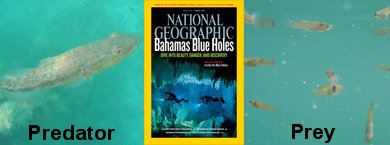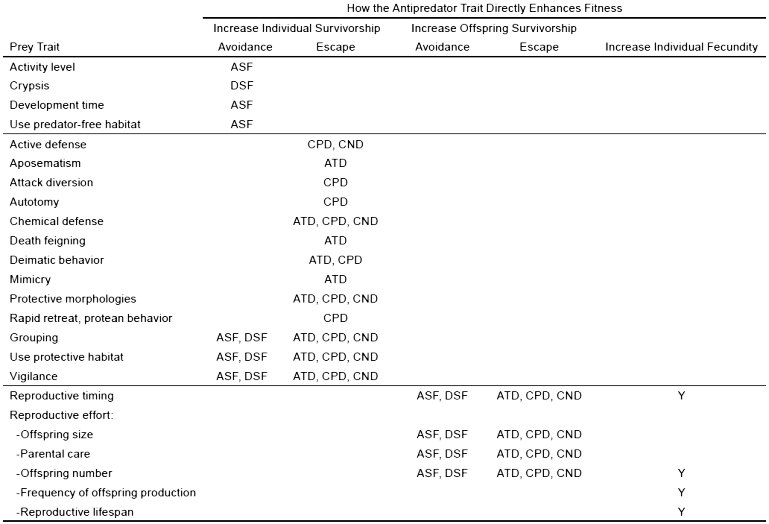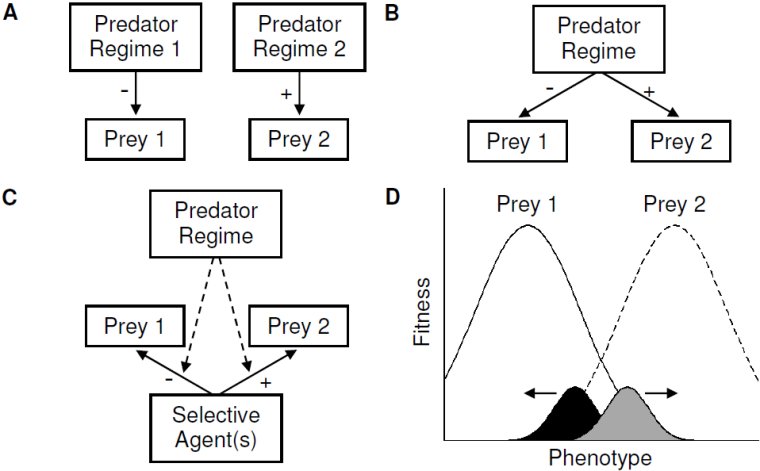|
Predation is one of the most important and obvious forces shaping organismal traits. Prey have evolved diverse means of enhancing the probability of survival (of individuals or their offspring) in the face of predation, comprising two major classes of antipredator strategies: (1) avoidance of predatory encounters, and (2) escaping after encountering a predator. While most antipredator traits fall into one of these two categories, some life history traits influence only fecundity, not survival. The table to the right presents a conceptual framework for understanding antipredator traits based on the manner in which traits directly influence prey fitness and the chronological stage of the predatory encounter in which they function (table from Langerhans 2006).
Our lab investigates the role of predation in driving phenotypic evolution and speciation, including theoretical, conceptual, and empirical work. Much of this work centers on livebearing fish in the genus Gambusia, with a major focus being the model system of inland blue holes in the Bahamas. We examine the role of predation from piscivorous fish in driving adaptive differentiation in behavior, morphology, life history, and locomotor abilities in Gambusia fishes. We further investigate the interaction of predation intensity with sexual selection, resource competition, and gene flow.

Predation can generate divergent selection among prey populations in several different ways, and is predicted to represent a major source of evolutionary change. The figure to the right illustrates three common ways that predators can drive phenotypic divergence among prey populations (or species). Solid arrows in A-C depict selection on a prey trait. The sign beside each arrow indicates the direction of the optimal phenotype in relation to the population mean. Divergent selection arising from (A) divergent predator regimes, (B) competition for enemy free space within a given predator regime, and (C) an interaction between predation and the prey’s selective regime. (D) Hypothetical fitness functions resulting from each scenario depicted in A-C, with trait distributions for the two prey populations represented by the shaded areas. Arrows in D illustrate the direction selection is pulling trait means for each population. Figure from Langerhans 2006.
|
|
A Framework for the Evolution of Antipredator Traits:

Acronyms are as follows, ASF: avoiding a predator's sensory field, DSF: avoiding detection within a predator's sensory field, ATD: attack deterrence, CPD: capture deterrence, CND: consumption deterrence, Y: yes.
Three Primary Ways that Predators Can Drive Divergent Selection:

|




